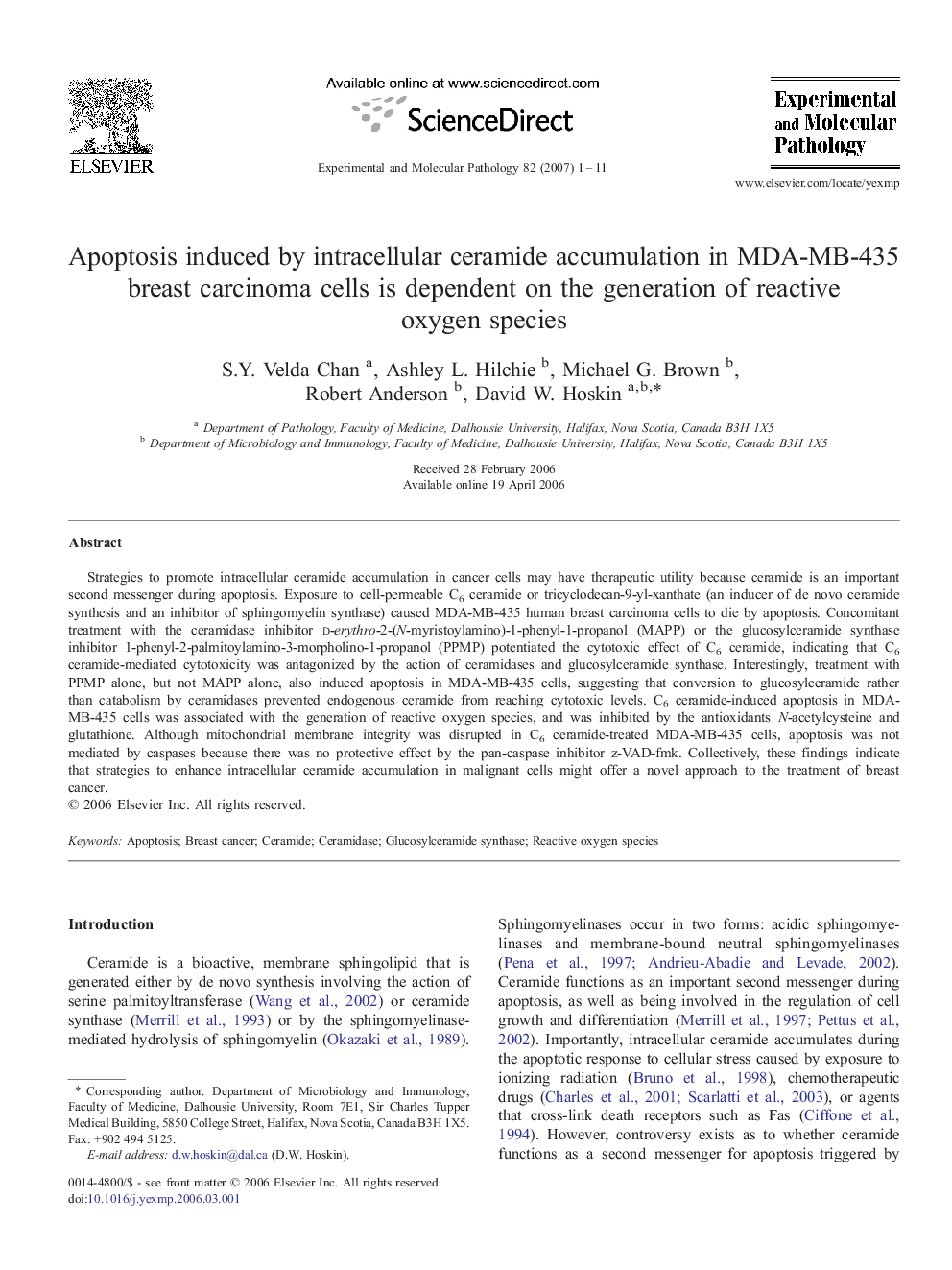| Article ID | Journal | Published Year | Pages | File Type |
|---|---|---|---|---|
| 2776011 | Experimental and Molecular Pathology | 2007 | 11 Pages |
Strategies to promote intracellular ceramide accumulation in cancer cells may have therapeutic utility because ceramide is an important second messenger during apoptosis. Exposure to cell-permeable C6 ceramide or tricyclodecan-9-yl-xanthate (an inducer of de novo ceramide synthesis and an inhibitor of sphingomyelin synthase) caused MDA-MB-435 human breast carcinoma cells to die by apoptosis. Concomitant treatment with the ceramidase inhibitor d-erythro-2-(N-myristoylamino)-1-phenyl-1-propanol (MAPP) or the glucosylceramide synthase inhibitor 1-phenyl-2-palmitoylamino-3-morpholino-1-propanol (PPMP) potentiated the cytotoxic effect of C6 ceramide, indicating that C6 ceramide-mediated cytotoxicity was antagonized by the action of ceramidases and glucosylceramide synthase. Interestingly, treatment with PPMP alone, but not MAPP alone, also induced apoptosis in MDA-MB-435 cells, suggesting that conversion to glucosylceramide rather than catabolism by ceramidases prevented endogenous ceramide from reaching cytotoxic levels. C6 ceramide-induced apoptosis in MDA-MB-435 cells was associated with the generation of reactive oxygen species, and was inhibited by the antioxidants N-acetylcysteine and glutathione. Although mitochondrial membrane integrity was disrupted in C6 ceramide-treated MDA-MB-435 cells, apoptosis was not mediated by caspases because there was no protective effect by the pan-caspase inhibitor z-VAD-fmk. Collectively, these findings indicate that strategies to enhance intracellular ceramide accumulation in malignant cells might offer a novel approach to the treatment of breast cancer.
